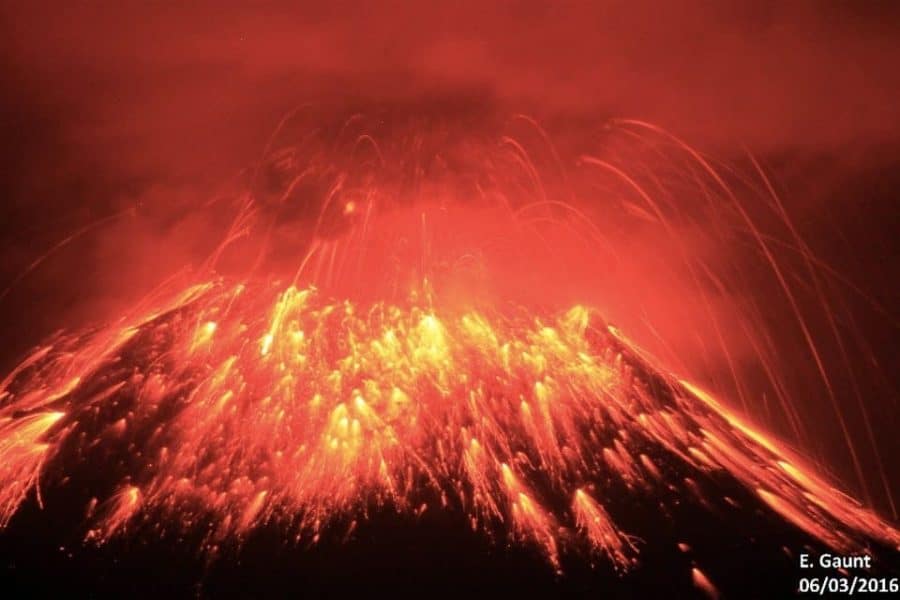The Earth has set the sky ablaze
with glorious hues of orange.
Strombolian explosions spew
incandescent blocks, emerging
from the Throat of Fire with
biblical intent as they race
down fragile, bulging flanks.
An ancient scar starts to throb,
its suppurating skin pulsating
with intemperate rage
as beneath its surface a
fresh wound
starts to fester.
Seismic swarms and plumes
of ash threaten to break
free from their swollen,
rounded prison.
The deformed shadow of
a Black Giant falling hard
across this spoiled,
expectant land.
 Strombolian explosions send incandescent blocks down the flanks of Tungurahua on the 6th March 2016 (Image Credit: E. Gaunt).
Strombolian explosions send incandescent blocks down the flanks of Tungurahua on the 6th March 2016 (Image Credit: E. Gaunt).This poem is inspired by recent research, which has found that one of South America’s most prominent volcanoes has shown signs of possible flank instability.
Tungurahua, is an active volcano located in the Andes of central Ecuador, and is known locally as ‘The Black Giant’. The volcano has been frequently active since 1999, leading to the evacuation of 25,000 people from nearby communities. The volcano also has a long history of flank collapse, in which the side (or flank) of the volcano collapses due to an instability. Such events are amongst the largest and most destructive processes on Earth, leading to extremely large landslides that form avalanches of rock that may travel outwards for large distances, destroying all in their path.
A previous eruption of Tungurahua, around 3,000 years ago, caused a prior, partial collapse of the west flank of the volcano. Since then, the volcano has steadily regrown, now peaking with a steep-sided cone more than 5000 m in height. However, the new west flank, above the site of the 3000-year-old collapse, has shown repeated signs of rapid deformation. This new research uses satellite data to show how such a deformation has likely been caused by shallow, temporary magma storage beneath the west flank. If this localised increase to the magma supply is continued, then the sheer volume can promote a new instability of the west flank and its potential collapse. It is therefore invaluable that Tungurahua is being continuously monitored by the Instituto Geofísico.
An audio version of this poem can be heard here:
If our reporting has informed or inspired you, please consider making a donation. Every contribution, no matter the size, empowers us to continue delivering accurate, engaging, and trustworthy science and medical news. Independent journalism requires time, effort, and resources—your support ensures we can keep uncovering the stories that matter most to you.
Join us in making knowledge accessible and impactful. Thank you for standing with us!

